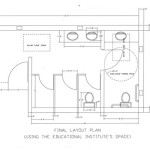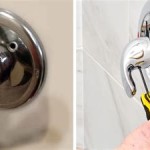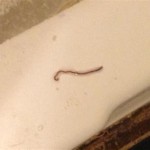What Causes Bathroom Sewer Smell?
The presence of a persistent sewer smell in a bathroom is a frustrating and potentially concerning issue. This unpleasant odor, often reminiscent of rotten eggs or decaying organic matter, indicates a problem within the plumbing system that allows sewer gases to escape into the living space. Identifying the source of the smell is crucial for effective remediation and prevention of more serious plumbing complications. Understanding the underlying mechanisms that contribute to this problem can help homeowners and professionals alike pinpoint the cause and implement the appropriate solutions.
Sewer gases are a natural byproduct of the decomposition of organic waste within the wastewater system. These gases are typically composed of methane, hydrogen sulfide, ammonia, and other volatile organic compounds. While these gases are generally harmless in low concentrations, prolonged exposure can lead to health issues such as headaches, nausea, and respiratory irritation. Moreover, methane is a flammable gas, posing a potential fire or explosion hazard in enclosed spaces. Therefore, promptly addressing the source of a bathroom sewer smell is essential for maintaining a safe and healthy living environment.
Dry or Defective P-Traps
The most common culprit behind bathroom sewer smells is a malfunctioning or dry P-trap. The P-trap is a U-shaped pipe located beneath every sink, toilet, shower, and bathtub drain. Its primary function is to trap a small amount of water within the U-bend, creating a water barrier that prevents sewer gases from rising up through the drain and into the bathroom. When this water barrier is compromised, sewer gases can freely enter the room, resulting in the characteristic foul odor.
Several factors can lead to a dry P-trap. First, infrequent use of a particular fixture can cause the water in the P-trap to evaporate over time, particularly in warm and dry climates. Guest bathrooms or infrequently used sinks are especially susceptible to this issue. Second, leaks within the plumbing system, particularly around the drainpipe connections or within the P-trap itself, can allow water to escape gradually, eventually emptying the trap. Third, improper venting can create a siphoning effect, drawing water out of the P-trap as other fixtures are used. This is more common in older plumbing systems where venting may be inadequate or improperly installed.
Diagnosing a dry P-trap is relatively straightforward. If the sewer smell is localized around a specific drain, simply running water down the drain for a minute or two can often reestablish the water barrier and eliminate the odor. If the smell persists despite refilling the trap, a leak or more complex plumbing issue may be the cause. Regular use of all bathroom fixtures, even those used infrequently, can help prevent the P-trap from drying out. Inspecting the drainpipe connections for signs of leaks and ensuring proper venting are also important preventative measures.
Ventilation Problems
The plumbing ventilation system plays a crucial role in maintaining proper air pressure within the drainpipes and preventing sewer gases from entering the home. This system consists of a network of pipes that vent to the outside, typically through the roof. These vent pipes allow air to enter the drainpipes, preventing a vacuum from forming as water flows through the system. A properly functioning ventilation system ensures that water drains smoothly and that sewer gases are directed away from living spaces.
Blockages in the vent pipes can severely disrupt the ventilation system's function. These blockages can be caused by leaves, debris, animal nests, or even ice buildup in colder climates. When the vent pipe is blocked, a negative pressure can develop within the drainpipes as water drains. This negative pressure can then siphon water from the P-traps, effectively eliminating the water barrier and allowing sewer gases to enter the bathroom. Furthermore, inadequate venting during the initial plumbing installation or subsequent renovations can also contribute to this problem.
Identifying a blocked vent pipe often requires a visual inspection of the roof vent. However, this can be dangerous and should only be attempted by qualified professionals. Symptoms of a blocked vent include slow-draining fixtures, gurgling sounds from drains, and a persistent sewer smell in the bathroom. Professional plumbers can use specialized tools, such as drain snakes or hydro-jetting equipment, to clear blockages from vent pipes. Ensuring proper ventilation during plumbing installations and regular maintenance of the vent system are essential for preventing sewer smells caused by ventilation problems.
Sewer Line Issues
Problems within the main sewer line can also manifest as a sewer smell in the bathroom, although these issues typically present with more significant plumbing problems. The main sewer line carries wastewater away from the house to the municipal sewer system or a septic tank. Damage to this line, such as cracks, breaks, or blockages, can allow sewer gases to escape and permeate into the surrounding soil. These gases can then migrate into the house through cracks in the foundation or around plumbing penetrations.
Tree root intrusion is a common cause of sewer line damage. Tree roots are attracted to the moisture and nutrients within sewer lines and can gradually infiltrate the pipes through small cracks or joints. As the roots grow, they can expand and further damage the pipe, eventually causing a complete blockage. Other potential causes of sewer line damage include ground shifting, corrosion of older pipes, and improper installation. Additionally, flushing inappropriate items down the toilet, such as grease, diapers, or feminine hygiene products, can contribute to sewer line blockages.
Sewer line problems are often accompanied by other symptoms besides a sewer smell, such as slow-draining toilets, multiple clogged drains, and sewage backups in the yard. Diagnosing a sewer line issue typically requires a professional plumbing inspection, often involving a sewer camera inspection. This allows plumbers to visually inspect the inside of the sewer line and identify any cracks, breaks, blockages, or root intrusion. Depending on the severity of the damage, repairs may involve patching the damaged section of pipe, replacing a portion of the line, or even replacing the entire sewer line. Regular maintenance, such as avoiding flushing inappropriate items and addressing tree root issues promptly, can help prevent sewer line problems and the associated sewer smells.
Wax Ring Failure on the Toilet
The wax ring, located between the base of the toilet and the flange on the floor, forms a watertight seal that prevents water and sewer gases from leaking out when the toilet is flushed. Over time, this wax ring can dry out, crack, or become damaged, compromising its ability to create a tight seal. When the wax ring fails, sewer gases can escape from around the base of the toilet, resulting in a noticeable sewer smell in the bathroom. Furthermore, water leaks may also occur, leading to water damage and potential mold growth.
Several factors can contribute to wax ring failure. The age of the wax ring is a primary factor, as wax rings typically last for only a limited number of years before deteriorating. Toilet movement or shifting can also damage the wax ring, particularly if the toilet is not properly secured to the floor. Additionally, using harsh chemical cleaners in the toilet bowl can gradually degrade the wax ring over time. In some cases, improper installation of the wax ring during toilet installation or replacement can lead to premature failure.
Identifying a wax ring failure often involves inspecting the base of the toilet for signs of leaks or water stains. A wobbly toilet can also be an indicator of a failing wax ring. The presence of a sewer smell localized around the toilet is another strong indicator. Replacing a wax ring is a relatively straightforward DIY project, but it requires disconnecting the toilet, removing the old wax ring, and installing a new wax ring before reconnecting the toilet. It is important to ensure that the new wax ring is properly positioned and that the toilet is securely fastened to the floor to prevent future leaks or damage. In cases where the toilet flange is damaged or corroded, it may also need to be repaired or replaced to ensure a proper seal.
Biofilm Buildup
Biofilm, a slimy layer of microorganisms that adheres to surfaces in moist environments, can accumulate in drains and pipes over time. This biofilm harbors bacteria that break down organic matter, producing various gases, including hydrogen sulfide, which contributes to the characteristic sewer smell. While biofilm buildup is a natural process, excessive accumulation can lead to significant odor problems, particularly in areas with slow-moving or stagnant water.
Several factors can contribute to biofilm buildup in bathroom drains. Infrequent use of a drain allows organic matter to accumulate and decompose, providing a food source for bacteria. The presence of hair, soap scum, and other debris in the drain further promotes biofilm growth. Additionally, the design of some drainpipes can create areas where water tends to stagnate, fostering biofilm formation. Improperly maintained drains and pipes are particularly susceptible to biofilm buildup, creating a breeding ground for odor-producing bacteria.
Addressing biofilm buildup requires regular cleaning and disinfection of drains and pipes. Pouring boiling water down the drain can help loosen and dislodge the biofilm. Commercial drain cleaners containing enzymes or bacteria specifically designed to break down organic matter can also be effective. Avoid harsh chemical drain cleaners, as they can damage pipes and are often ineffective at removing biofilm. For more severe cases, professional drain cleaning services may be required to thoroughly remove the biofilm and restore proper drain function. Preventative measures, such as regularly flushing drains with hot water and using drain screens to catch hair and debris, can help minimize biofilm buildup and prevent sewer smells.

7 Causes Of A Sewer Smell In The Bathroom Hays

What Causes A Sewer Smell In The Bathroom Make It Right

Why Does My Toilet Smell Like Sewage 5 Causes Solutions

My Bathroom Smells Like A Sewer What Causes That And How Do You Fix It Kitchen Infinity

Sewer Smell In Bathroom Identify And Eliminate The Odor

What Causes Bathroom Drains To Smell

Sewer Smell In Bathroom Solved Bob Vila
My Bathroom Smells Bad But Only When Its Hot Outside It Also Will Slightly Go Away I Run The Sink And Toilet Bathtub Any Thoughts On What Is
What To Do When You Notice A Sewer Smell In Bathroom Spaces Howstuffworks

Why Is There A Sewer Odor In My Bathroom Ben Franklin Bay Area
Related Posts







